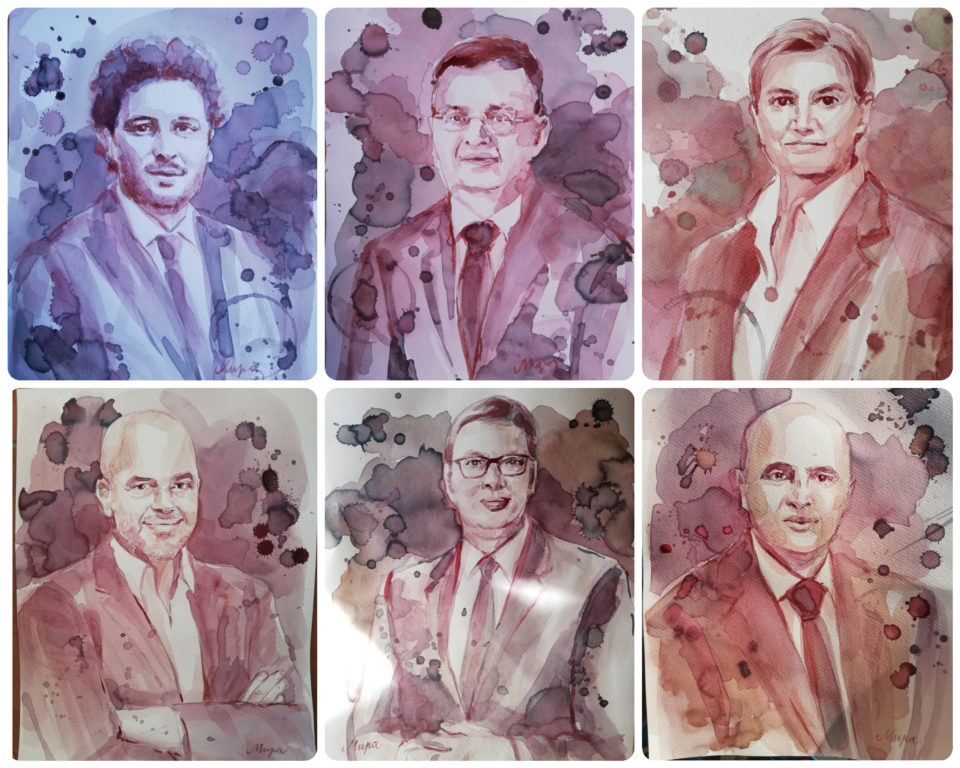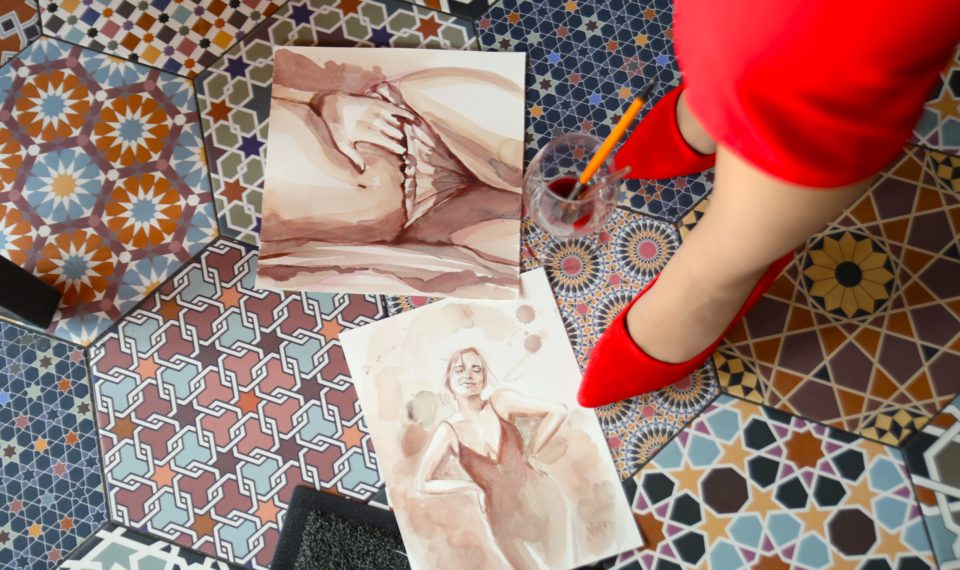
The painter Mira Kovačević found her passion for art in the technique of painting with wine, thereby confirming that using even the most unusual materials can reach the hearts of others. After becoming bored with standard painting techniques, she wanted to do something different and unique.
During a wine tasting, she remembered a technique that allowed her to find her extraordinary style: the technique of wine painting.
After completing her first wine painting, she was already certain that she was on the right path. However, she describes familiarizing herself with the technique as a long, slow process because wine painting as an art form was almost forgotten. Few people knew about it, and it wasn’t taught in art schools or academies. “There’s no literature on wine painting, so all an artist can do is to paint based on emotions,” Kovačević added.

She explained that after sketching the motif, she uses various types of red wines, patiently applying layer after layer. Both wine painting and wine itself require patience and time. Once the layers of wine are completely dry, she moves on to others, ultimately creating a picture of an unusual appearance, painted exclusively with wine, primarily red. “You can also paint with rosé and white wines, and then you get very delicate, almost transparent tones,” said Kovačević.
The majority of her work consists of portraits, which come to life from the clients’ desire to give a gift to someone dear to them who loves wine – a painting created with their favorite beverage which captures a beautiful moment. On the other hand, when she paints based on own ideas, the motifs almost always involve women who share a common passion for wine and working in vineyards.
“These women are sometimes dressed in provocative lingerie, completely nude, or wearing sumptuous romantic dresses, and there is always a glass of wine somewhere nearby. If they are working in the vineyard, then I paint them carefully and attentively gathering each cluster of grapes, contemplating the wine to come,” explained Kovačević.
She exhibited her works in September of last year as part of “Wine Vision of the Open Balkans,” the largest wine fair in the region. On this occasion, she had the intriguing task of painting wine portraits of all of the fair’s most distinguished guests. These portraits were then presented to the guests as an official gift from the President of the Republic of Serbia.

“For me, it was a tremendous honor, responsibility, and also a confirmation that what I do is good enough to become a part of such an important event,” said Kovačević, emphasizing that the portraits created for that occasion were the most significant and dearest works she has painted.
Since wine is the only substance used to paint, the appearance of the painting inevitably changes due to oxidation. Strong purples, ruby reds, and burgundy tones gradually turn into browns over time, and therein lies the beauty of these paintings – they change daily before our eyes.
The paintings are usually exhibited at wine fairs several times a year, providing a unique opportunity for people to see the artworks in person. Currently, there is an upcoming wine painting exhibition scheduled to open in mid-September at the Museum of Viticulture and Viniculture in Aleksandrovac. Additionally, Kovačević regularly shares her paintings on social media platforms, where people often place orders for them. The artworks are also available in an online gallery and can be found in wine shops in Belgrade, Šabac, and Banja Luka.

“This is an art that demands patience, knowledge of wine, its colors, and characteristics, but it also requires that the artist have a steady hand and the skill to forge a connection between this unusual art form and the audience,” concluded Kovačević.






